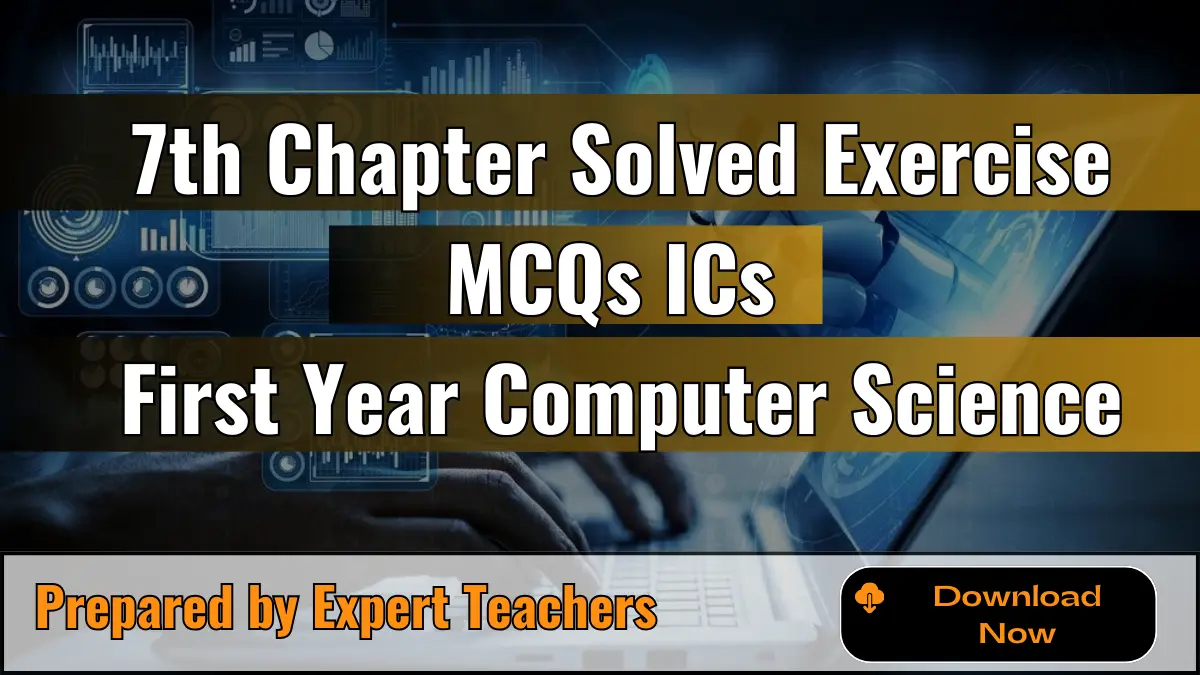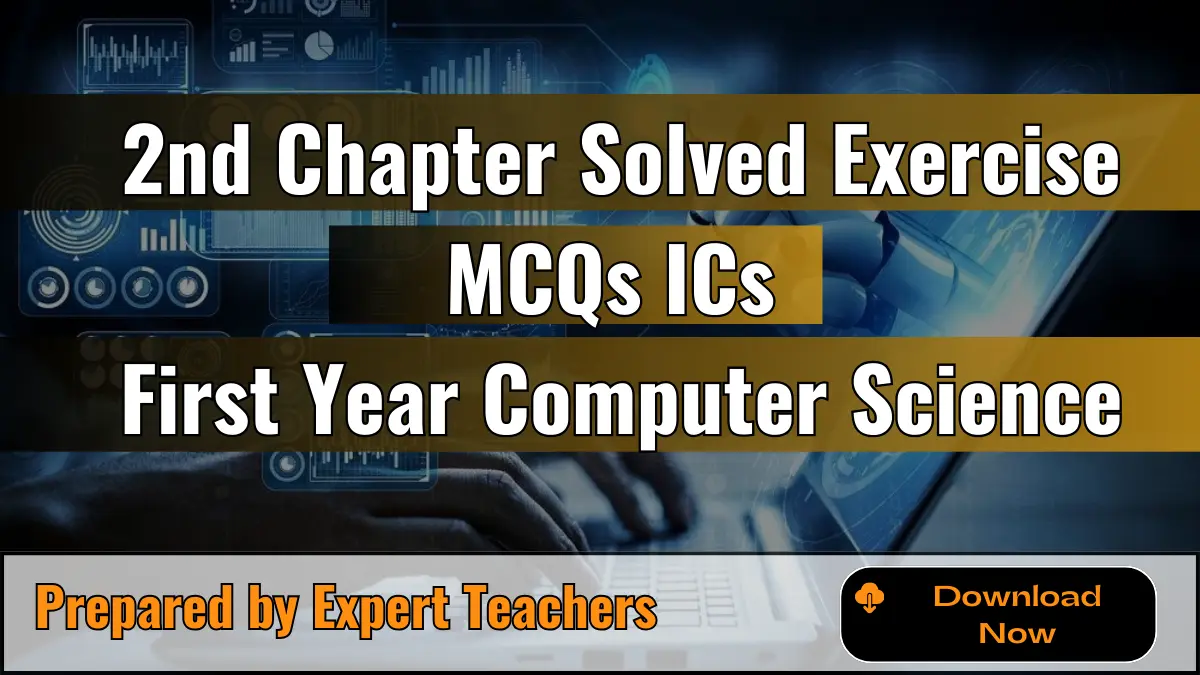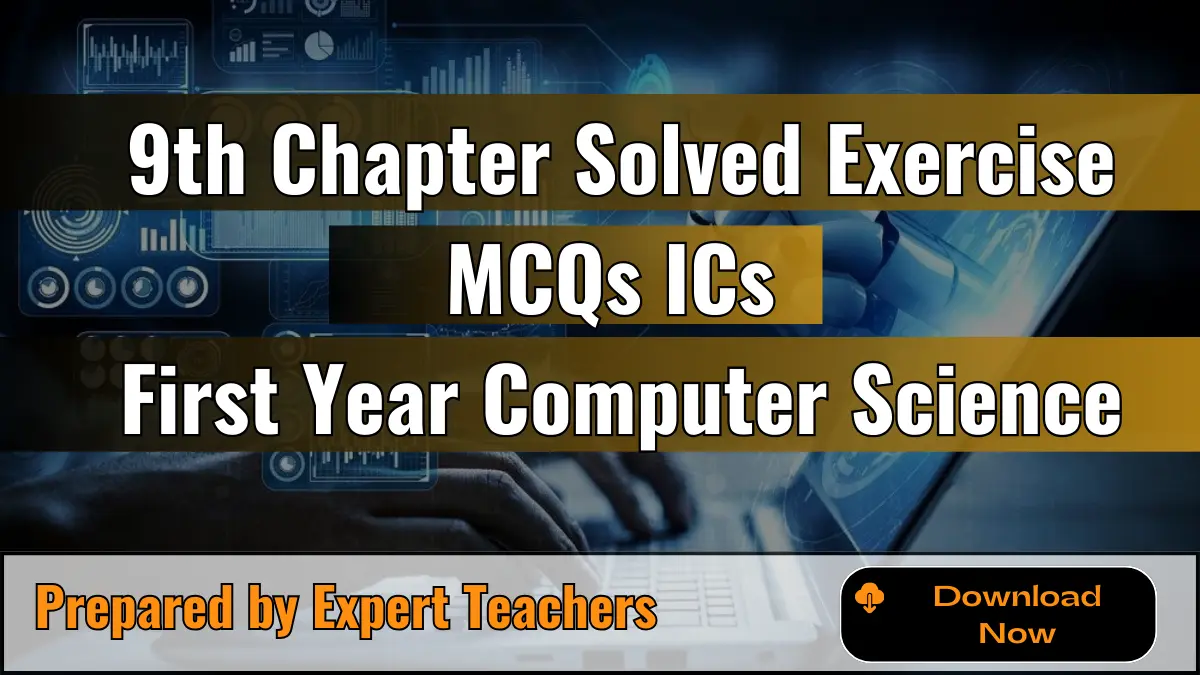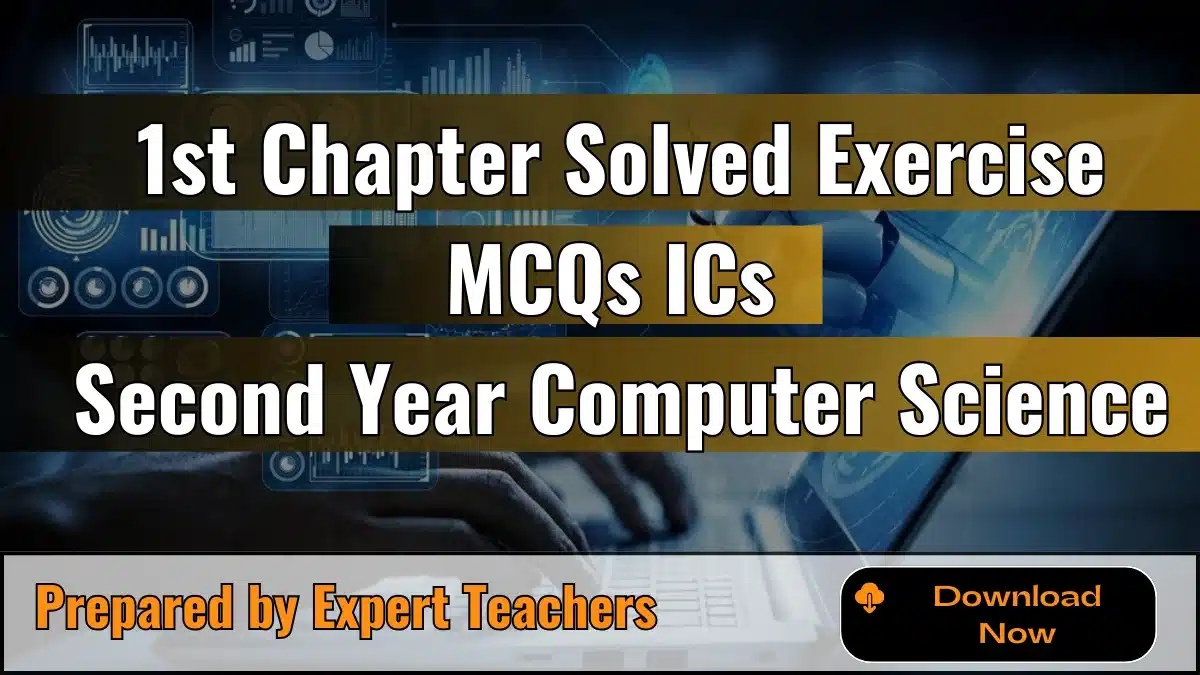Eighth Chapter Solved Exercise MCQs Of ICS Second Year Computer Science
Eighth Chapter Solved Exercise MCQs Of ICS Second Year Computer Science. Each question includes the correct answer and a brief explanation. It’s designed to help you study, prepare for exams, and understand key concepts better. Boost your Computer Science knowledge with these practice exercises.
Eighth chapter solved MCQs with explanation
1. C is a
a) High Level Language
b) Low Level Language
c) Assembly Language
d) Machine Language
Explanation: C is considered a low-level language because it provides a good balance between high-level abstraction and low-level hardware control.
2. Turbo C++ can compile
a) C++ programs only
b) C and C++ programs
c) Turbo C programs only
d) Turbo C++ programs only
Explanation: Turbo C++ can compile both C and C++ programs.
3. Debugging is the process of
a) Creating bugs in a program
b) Identifying and removing errors
c) Identifying Errors
d) Removing Errors
Explanation:Debugging involves finding and fixing errors in a program.
4. C was designed to write programs for
a) Windows operating system
b) Solaris operating system
c) Unix operating system
d) OS/2 operating system
Explanation:C was originally designed to develop software for the Unix operating system.
5. Preprocessor directives are commands for
a) Microprocessor
b) Language processor
c) C preprocessor
d) Loader
Explanation: Preprocessor directives are commands for the C preprocessor, which handles code before compilation.
6. The expression in a #define directive
a) can only be changed at the end of the program
b) cannot be changed
c) cannot be changed but can be redefined
d) cannot be assigned a value
Explanation: Once defined, the expression cannot be changed but can be redefined with a new value.
7. Which of the following languages requires no translator to execute the program?
a) C
b) C++
c) Machine language
d) Assembly language
Explanation: Machine language is the only language that the computer can execute directly without translation.
8. An .exe file is produced by the
a) Linker
b) Loader
c) Compiler
d) Interpreter
Explanation: The compiler produces an .exe file, which is the executable file for the program.
9. Which of the following keys is used to save a file?
a) F2
b) F3
c) F5
d) F9
Explanation: F9 is commonly used to save a file in various applications (though it can vary by application).
10. void occupies how many bytes in memory?
a) zero
b) one
c) two
d) four
Explanation The void type does not occupy any memory because it represents the absence of data.







Leave a Reply